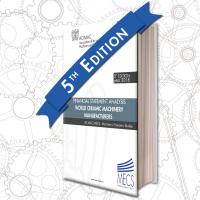Ceramic machinery: Italian companies see growth in profitability

Now in its fifth edition, the new Acimac Research Department’s Report entitled "Financial statement analysis of world manufacturers of machinery for the ceramic and brick industries" examines the 2014-2016 economic and financial figures of 188 companies, including 140 Italian and 48 foreign firms operating in Spain, China, France, Portugal, Czech Rep., Japan, Belgium, Greece, UK, Luxemburg, Turkey and Brazil. Like the previous editions of the report, the new publication serves as a comprehensive tool for evaluating performance and for benchmarking business models across a significant sample of companies.
One of the key findings of the report is the different profitability trends between Italian companies and those operating in other countries. In the three-year period examined, Italian companies reported an improvement in profitability while those operating elsewhere in the world saw a slowdown.
More in details, as observed in the 2016 financial statements, the Italian ceramic machinery manufacturers registered significant growth in investments (+5.2%), invested capital per employee, and productivity per employee, as well as in EBITDA and EBIT margin, with net profit showing an even more substantial progress.
The trend in labour costs per unit turnover demonstrates that the Italian ceramic machinery manufacturers have also achieved good levels of efficiency in terms of personnel management. While labour costs per employee remain relatively high compared to the rest of the world, on average they remain low in relation to turnover (20.2%, corresponding to a fall of around half a percentage point in 2016).
Results broken down by company size and type of machinery produced
A dimensional analysis of all 188 companies in the study reveals a significantly better performance on the part of the large, and particularly medium-large, companies. The most efficient, high-performing companies appear to be those with turnovers of between 10 and 40 million euros. In this size category, EBITDA is more than 2.4 percentage points higher than the world average.
Breaking down company results according to the type of machinery produced, the 5th edition of the Acimac study once again revealed a higher level of profitability amongst manufacturers of machinery for tile production compared to companies supplying the sanitaryware sector and to an even greater extent the brick and roof tile sector.
In greater detail, manufacturers of plant for tile finishing and companies operating in the digital decoration segment reported significantly higher-than-average profitability in 2016.
The 28 best performing companies
This edition of the study once again provided an analysis of the best performing companies using statistical clustering methods. A cluster of 28 best performing companies was identified, including 25 operating prevalently in the tile machinery sector and 3 in the brick and roof tile machinery sector.
On average the best performing companies pay the highest salaries in the sector, but they also have an extremely high level of productivity per employee measured in terms of added value: higher than 105,000 euros per employee (more than 65% above the industry average). This results in a labour cost to turnover ratio of just 16.8%.
Read the complete article published on Ceramic World Review 126/2018.
Did you find this article useful?
Join the CWW community to receive the most important news from the global ceramic industry every two weeks
























